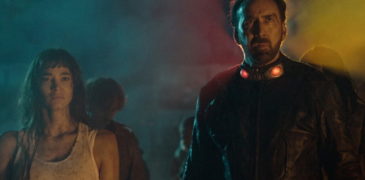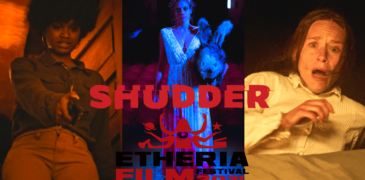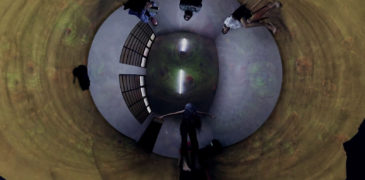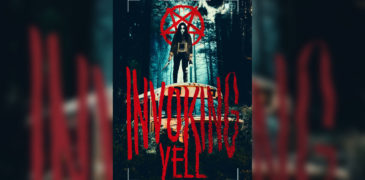
Cursed Land (in competition at the Dracula Film Fest under the name Cursed Land. Fate), was one of the best films I saw at that festival, a big surprise basically coming out of nowhere – if for ‘On the 3rd Day’ I knew what to expect, here I had just a great poster to start with. The director, Stepan Burnashev, is a well-known figure of the Yakutian filmmaking community, with lots of titles under his belt, and the setting is ripe for some absolutely stunning imagery, the kind that Russian cinema pulls off so well. According to a Time.com article, making films in Yakutia is a thriving venture, and if this one is any indication, it absolutely warrants a closer look.
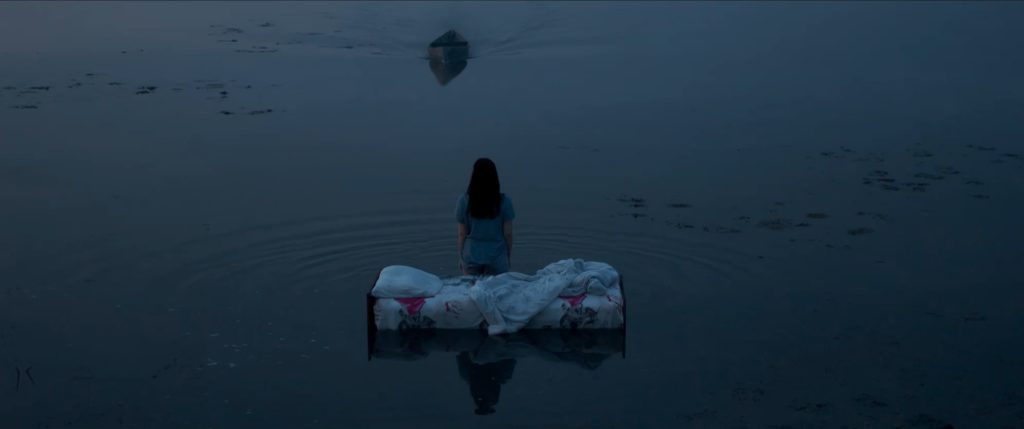
Thematically, if I had to have a starting point for Cursed Land, I would say it ‘borrows’ from both ‘Relic’ (family reunion and legacy) and ‘The Old Ways’ (tradition, cursed places, spirituality and a young character growing into the role of shaman), but in effect, it is a slow-burn folk-horror film that sometimes walks through a lot of classic horror situations – especially being stuck in a cramped apartment and plagued by nightmares, getting lost in the woods, spending the night in a cabin, or being trapped in the wilderness because of the car malfunctioning. According to the same article mentioned above, this is actually a sequel to a very popular 1996 movie, but don’t worry: it can absolutely be watched on its own. It is a film is full of omens, dreams, and sometimes surreal imagery – when the terror hits, it is not shown as much as it is felt all around – it is the land itself that must be appeased, through sacrifice and understanding. Will the protagonist succeed in braving this territory, or will she end up being possessed by an evil entity that seems to want her very soul?
Alyona is a twentysomething Moscow art student who is forced to go looking for her mother after she goes missing, first in the small town which she had left behind, and later in the Symyr region. The police, as is the norm in Russian films (Andrey Zvyagintsev fans will get a kick out one scene especially), is not being helpful at all, and Alyona is even forced to go through a harrowing body identification of a complete stranger due to the police mistaking her for her mother. Soon, the foster father, Dima, shows up to help, and together they find the mother, Anna, in a trance, after having visited a Symyr witch, who claims that an evil spirit has taken hold of her.
Immediately, one aspect of the movie that immediately grabbed me was Alyona herself, and especially her acting her age. Her mother’s absence causes her to be scared and aloof. She mentions being expelled from college due to absences and poor grades, and she has a recurring nightmare of a lake and an empty boat. But mostly, Alyona is still searching for herself, and she is caught up in nostalgia and how she is being defined by her complicated family history – her father abandoned her, her mother took her away from the village they had been living in, and early on in the movie she discovers, to her shock, that she had a different name as a young girl. When she is forced to navigate the Yakutian wilderness, she encounters different people who act as her guides to this spiritually-infused land: first, Dima, who is an outsider, then, the local witch, who tells her what is wrong but cannot help her further and, later on, a surprise figure from her past, who initiates her into the new role she must play in order to save her family and the ‘cursed land’.
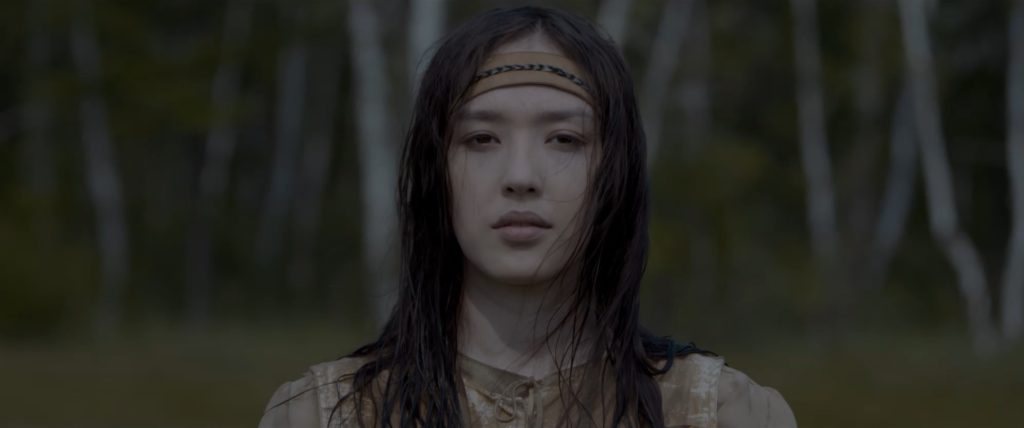
The second impressive aspect is the depiction of shamanism as being tied to the land, as well as an impulse, a natural force residing within someone ‘worthy’, a soul who can be one with her surroundings and respectful of nature. There is a beautifully-shot scene involving the funeral of a shaman, and Alyona carries with her an amulet forged by her biological father, which wards off evil spirits. I admit I don’t know much about shamanism, but I’ve always been intrigued by Shamanic aesthetics, in literature, poetry, and even in videogames (playing Shadowrun as a Shaman is an extremely rewarding experience, basically redefining the world around you, as well as centering your character through something much older and impressive than the foes you often have to battle). Also, as far as music videos go, there is Fever Ray’s amazing ‘When I Grow Up’, one of the best videos ever made, with the unforgettable image of a feral teen wearing a shaman getup, as well as torn sneakers.
Even if some individual scenes don’t register as well as they should, the movie oozes atmosphere, with stunning cinematography, impeccable pacing and a slow immersion through a territory that was foreign to me, with well-crafted storytelling in which everything comes together in the end (especially the meaning of the empty boat and one character’s death that might initially come off as cynical), and a finale that is absolutely mesmerizing, memorable (I will say two words: drum. beats), and yes, comparable to that of ‘Relic’, not so much in its sadness but in what it leaves behind in the mind of a horror film fan. It’s sad that this movie will not probably get the recognition it deserves (it currently doesn’t even have an imdb entry), because it deserves to stand among the modern horror greats.
Overall, Cursed Land comes with a huge recommendation – it will be a treat for fans of new-wave horror, as well as folk-horror, or for people who want to see something completely different. It is an impressive and often haunting portrait of a family reunited in the harshest of times, and of the burden of legacy. Even if it is a slow-burn, Burnashev is a master of his craft and not a moment is wasted – I came out of this movie feeling positively refreshed, even if it was 4 in the morning.
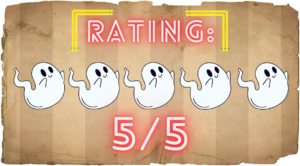
We watched Cursed Land as part of our Dracula Film Festival coverage.
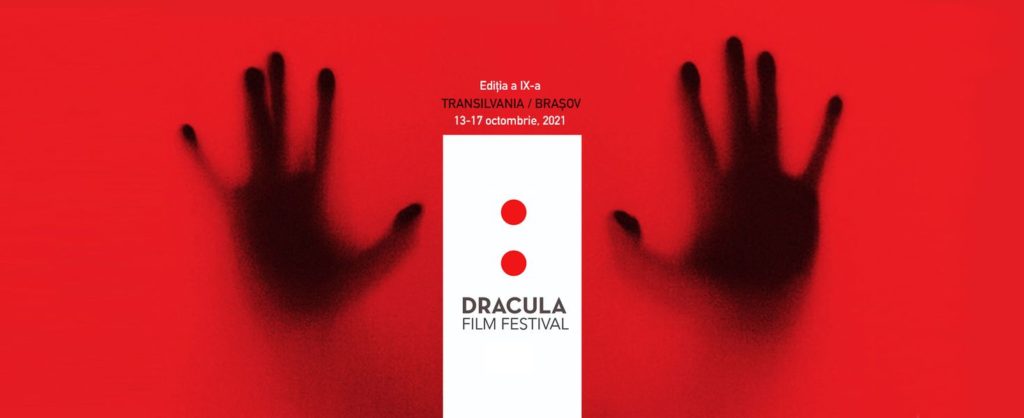
More FIlm Festival Coverage
Prisoners of the Ghostland wastes no time engaging viewers with its opening scene depicting the curious contrast of the stark white interior of a bank with its many patrons donned… The Etheria Film Festival, or Etheria Film Night, is an annual film festival to showcase the latest short films by female directors. The first Festival was founded in 2014 by… After purchasing a 360 camera, an aspiring filmmaker Nina Temich decides that she is going to follow her dream of being a film director. However, a trained dancer from an… Self-described as a metalhead for life, Chilean filmmaker Patricio Valladares makes some noise in this year’s version of Unnamed Footage Festival. Taking place in San Francisco, this event is proud… Necronomicon: Evocative Magic is a 2019 fantasy horror, directed by Mitsunori Hasegawa. Mitsunori is known for directing Onigokko (2013) and Machiawase (2013) and has also won the Grand Prize at… Musicals are my thing, they have been for as long as I can recall enjoying cinema, there is something so inherently magical about the world breaking out in song. For…Prisoners of the Ghostland (2021) Film Review – East Meets West for a Radioactive Psycho-Western
Etheria Film Festival 2021 – Breaking Down and Rating The Shudder Short Film Fest
Putrefixation A Video of Nina Temich (2022) Film Review – 360 Degrees of Horror
Invoking Yell (2023) Film Review- Not with a Bang but with a Shriek (Unnamed Footage Festival 666)
Necronomicon: Evocative Magic (2019) Film Review – I Have the Weirdest Boner Right Now!
Powertool Cheerleaders vs the Boyband of the Screeching Dead (2022) Review – Sing Into The Chainsaw!
